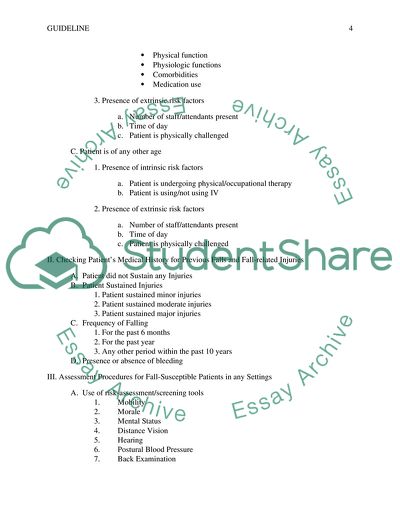Fall and Injury Prevention Outline Example | Topics and Well Written Essays - 500 words. https://studentshare.org/medical-science/1778788-fall-and-injury-prevention
Fall and Injury Prevention Outline Example | Topics and Well Written Essays - 500 Words. https://studentshare.org/medical-science/1778788-fall-and-injury-prevention.


